Troubleshooting
Problem
Before creating and configuring a database for use with ITDS, you must make sure your Kernel Parameters are set correctly. Otherwise you may encounter resource limitation issues.
Cause
Incorrect kernel parameter settings can lead to resource limitations.
Resolving The Problem
Setting the kernel configuration parameters on HP-UX
You might need to update kernel parameters in the /etc/system file before you create a directory server instance and configure a database for it.
Starting with the DB2 8.1 version, a utility called db2osconf is provided. (Look for this utility in the /opt/IBM/db2/V8.1/bin64/db2osconf directory.) The db2osconf utility determines the correct kernel settings for your computer.
The utility must be run as root or with the group sys because it accesses the following special devices (accesses are read-only):
crw-r----- 1 root sys 13, 1 Jul 19 18:06 /dev/kmem
crw-rw-rw- 1 root sys 72, 0 Feb 19 1999 /dev/ksyms
crw-r----- 1 root sys 13, 0 Feb 19 1999 /dev/mem
To run the utility, type db2osconf at a command prompt.
Note:
To view the usage information for the utility, type db2osconf -h. The following information is displayed (but the parameters vary depending on the version of the utility that you have):
Usage:
-c # Client only
-f # Compare to current
-h # Help screen
-l # List current
-m <mem in GB> # Specify memory in GB
-n <num CPUs> # Specify number of CPUs
-p <perf level> # Msg Q performance level (0-3)
-s <scale factor> # Scale factor (1-3)
-t <scale factor> # Number of threads
Example output from the db2osconf utility:
******************* System Resources ***********************
Physical RAM ==> 1073741824
Number of CPUS ==> 1
System Scale Factor ==> 2048.00
* Recommended HP-UX Kernel Parameters Based on this System *
nproc ==> 2064
maxuprc ==> 688
maxfiles ==> 1024
nflocks ==> 4096
ninode ==> 2867
nfile ==> 11469
msgseg ==> 32767
msgmnb ==> 65535
msgmax ==> 65535
msgtql ==> 1638
msgmap ==> 1640
msgmni ==> 1638
msgssz ==> 32
semmns ==> 4097
semmni ==> 2048
semmap ==> 2050
semmnu ==> 2048
shmmax ==> 966367642
shmmni ==> 2048
maxdsiz_64bit ==> 1900000000
****** Please Change the Following in the Given Order ******
WARNING[1]: Amount of Physical RAM = 1GB. To benefit from using 64bit addressing
at least 4GB is required.
WARNING[2]: maxuprc = 512. maxuprc should be set to 688.
WARNING[3]: maxfiles = 256. maxfiles should be set to 1024.
WARNING[4]: nflocks = 2048. nflocks should be set to 4096.
WARNING[5]: ninode = 2048. ninode should be set to 2867.
WARNING[6]: nfile = 8192. nfile should be set to 11469.
WARNING[7]: msgmni = 512. msgmni should be set to 1638.
WARNING[8]: shmmni = 512. shmmni should be set to 2048.
Use the output from the db2osconf utility to update the Kernel Parameters via the SAM tool.
To set a kernel configuration parameter:
At a command prompt, type: sam
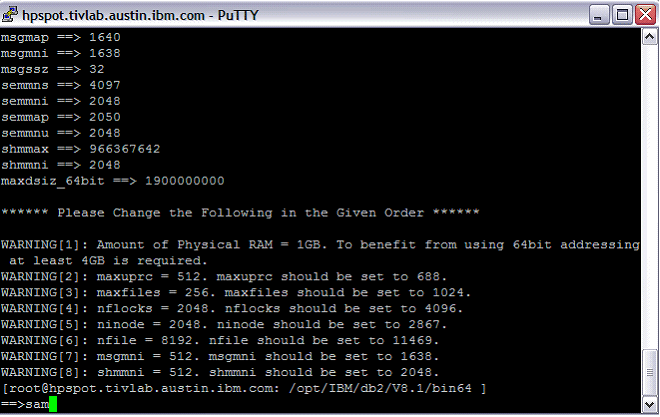
The System Administration Manager opens. Double-click Kernel Configuration.
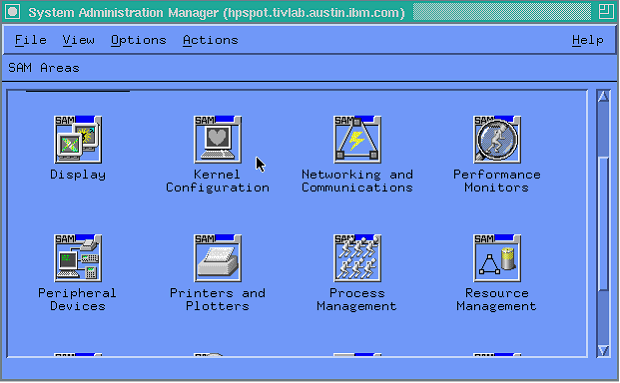
Double-click Configurable Parameters.
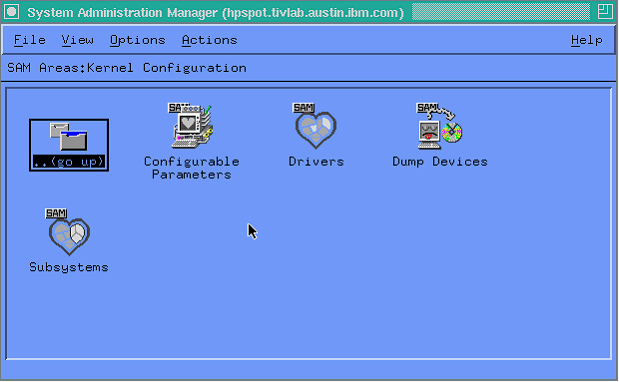
Scroll through the list and double-click the parameter you want to edit. For this example I will select the “maxuprc” setting.

Type the new value in the Enter New Formula/Value field. Click OK.
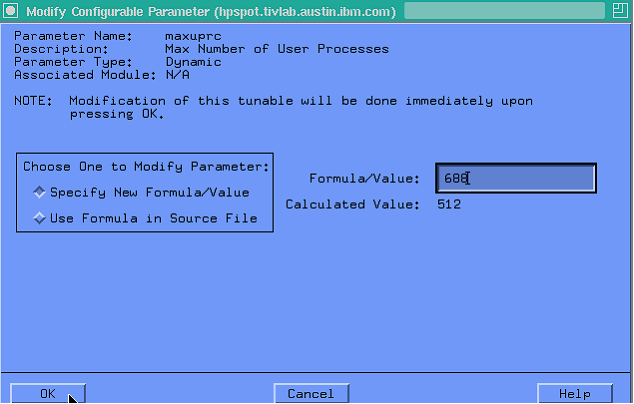
Repeat the above step for each parameter that needs to be set as indicated in the db2osconf output.
From the top menu bar, Click Actions --> Process New Kernel.
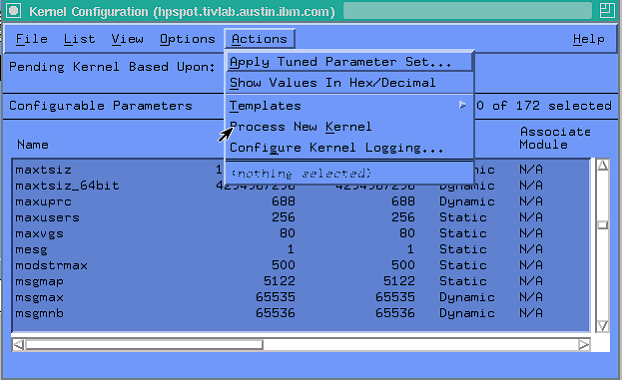
To process the modifications, click Yes.
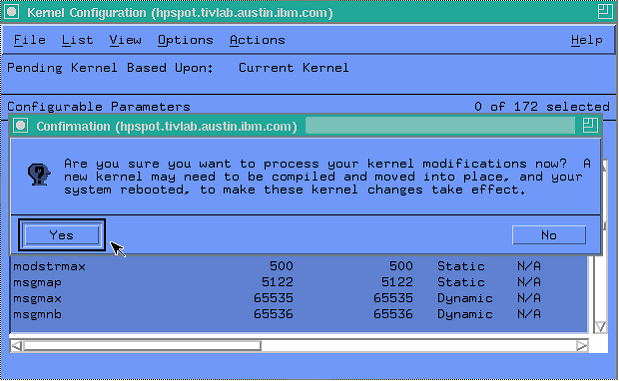
After making the changes to the kernel parameters, you must reboot the system so that the kernel changes will take effect.
Once the system is rebooted, you can run the db2osconf utility again to confirm that no further changes need to be made.
Was this topic helpful?
Document Information
Modified date:
16 June 2018
UID
swg21255365